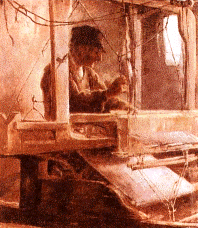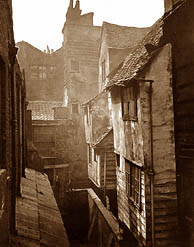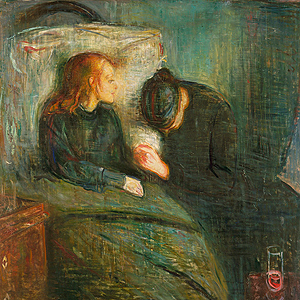isaac samuel malandain + mary ann bingley
Isaac was born on Thomas Street in Bethnal Green on 2 January 1828 and baptised at St Matthew Bethnal Green three weeks later. He was the second of three surviving children born to William Malandain and Mary Ann Ferrey.

He married Mary Ann Bingley on 15 August 1853 at St Matthew in Bethnal Green. At the time, he was living at 3 John Street and working as a Weaver as his father, grandfather and two more generations before him had done. Mary Ann was born in Bethnal Green in 1827 to Paul Bingley and his wife Ann. She lived on Cross Street which ran perpendicular to John Street; her father was also a Weaver and both Mary Ann and her mother worked as Silk Winders.
They remained on John Street after their wedding and were still there when their first two sons were born, William on 23 March 1854 and George Henry on 28 February 1856. But later that year, they moved to a house at 3a East Street only a few doors down from Mary’s sister Ann and her family.
Twins ran in Mary’s family so it was no surprise that she too gave birth to twins — Mary Ann and Henry were born on East Street on 20 April 1857 and they were christened along with brothers William and George on 10 May 1857 at St Simon Zelots, Bethnal Green. The decision to delay the baptisms of their eldest sons may have been due to finances as parish priests charged a nominal fee for baptisms and Isaac and Mary may not have had the money at the time. The health of their newborn twins may have increased the urgency of a baptism and only one month later, little Henry died and was buried at Victoria Park Cemetery on 23 June. Mary Ann died one month after Henry and on 22 July, she too was buried at Victoria Park.
Four years after losing their twins, they had another son, Henry William, known as Harry, who was born on 26 August 1858 and baptised at St James the Less in Bethnal Green on 12 September. A second daughter named Mary Ann was born on 5 February 1861 and baptised at St Simon Zelots on 10 March. When the census was taken two months later, the family was still living at 3a East Street in Bethnal Green and Mary’s sister Ann was still down the road at number 8a. Isaac and Mary were both working as Silk Weavers as were many other members of their respective families but with the weaving industry in serious decline, they could not earn enough in wages to pay their basic living expenses and in November 1861, Mary, who was six months pregnant, had no choice but to appeal to the parish guardians to request relief. In her application, she confirmed that her family had lived on East Street for almost six years and previous to that Labourer’s Lane off John Street for three years. This was a critical point in the request for relief as long term residency in the parish was the first requirement that had to be met and if it could not be proven, the individual would be referred back to their home parish. She also stated her husband was a weaver as was his father but she could not give any more information on Isaac’s father other than he lived on Conduit Street at weekly rents and died about 4 years previously.

Their seventh child, Emma, was baptised at St Simon Zelots on 9 March 1862. A deed document dated 24 July 1866, lists Thomas Blanchett Hill as the owner of four houses on East Street, numbers 1 to 3 and 3 1/2, and listed the tenants as Isaac as well as a William Maladine who was most likely Isaac’s older brother, William Isaac.
Isaac died on East Street in late March 1869, aged only 41 years, and he was buried at Victoria Park Cemetery on 29 March. The effect on the family must have been devastating, both personally and financially, but Mary was able to keep her family together and in 1871, she was still on East Street along with all five of her surviving children. To support the family, she was working as a Silk Winder and sons William and George earned a bit of money working as a Spinner and an Errand Boy.
Her eldest son William left home when he married Sarah Dodds on 20 November 1876 at St Peter in Stepney and they settled on Chisenhale Road near Victoria Park. Two years later, George married Maria Anne Tucker at St Mark in Bow and they moved to Fealstead Street on the other side of Victoria Park in Hackney Wick. Their only child, Florence Jeanette, was born four months later but died shortly after birth and was buried at Tower Hamlets Cemetery on 31 July 1878.
The family suffered another loss when 17 year old Mary Ann died in the Bethnal Green Workhouse on 1 October 1878. An inquest into her death was held at the Prince of Wales public house on Bonner’s Row in Bethnal Green and both Mary and her daughter Emma testified. Mary told the inquest jury that her daughter had been subject to very bad fits that had returned shortly before her death and as she could not afford a doctor, she took her daughter to the workhouse in cab and left her in the receiving ward. Mary returned home but when she received word two hours later that her daughter’s condition had worsened, she returned to to the workhouse and found her still in the receiving ward in a fit. Mary testified that she asked a doctor to apply a mustard plaster but his response was that it wouldn’t help as her daughter was dying. To make matters worse, the staff would not allow Mary stay with her daughter until she died and forced her to leave at 10pm. When Mary returned early the next morning, her daughter was dead.

The evidence from the workhouse rather coldheartedly confirmed that staff did not attend to Mary Ann because they knew she was dying. The attending doctor reported that Mary Ann had pulmonary consumption, a term used for tuberculosis, and that her mother was not allowed to stay because she was making too much noise and waking up other occupants of the ward. But Mary and her daughter Emma testified that there was no one else on the ward save for two night nurses. The doctor’s position was that with 275 beds in the infirmary ward ‘it would be impossible to preserve order if the wishes of relatives were in all cases complied with.’ The jury eventually accepted the doctor’s testimony but appended a rider to their judgement that stated ‘the conduct of the workhouse master, matron and house surgeon was decidedly inhuman and deserving of censure.’
By 1881, Mary had moved to 8 West Street along with 23 year old Harry and 19 year old Emma. She was working as a Silk Winder while Harry worked as a fresh fruit packer and Emma as a Silk Weaver.
Harry married Esther Terry on 5 August 1882 at St Thomas, Bethnal Green. After their marriage, they settled on Devonshire Street in a house with Esther’s parents, Thomas and Hannah Terry, and Harry continued to work as a Packer in a factory. They later moved to 90 Derby Street and an article in the Daily News on Saturday, December 4 1897 reported on a fire caused by the explosion of a mineral oil lamp that occurred at this address between eleven and twelve o’clock on the previous Thursday night. Esther, aged thirty-eight years, was severely burned on the face and arms in the accident and presumably treated in hospital although the newspaper report does not include any information on what happened after the fire. However, she survived the event and in 1901, the two of them were living at 3 Winchester Place in Bethnal Green where Harry worked as a furniture packer and Esther as a washerwoman, on her own account at home. Ten years later, they had moved to 3 Clarkson Street in Bethnal Green and the census confirms that although they had been married for 22 years, they did not have any children. Harry died in Bethnal Green in 1923 and Esther in 1931.
George and Maria were still in Hackney Wick when the census was taken in 1881 but they had moved to a neighbouring street, Wansbeck Road, and several years later, they moved again, to Victoria Park Road, on the opposite side of Victoria Park. In 1886, George was involved in an accident while at work and suffered serious head injuries. He was repairing the guttering of a house in Forest Gate when the ladder on which he was standing gave way and he fell to the ground. He suffered such severe injuries that he was taken to the London Hospital for treatment. It isn’t known how long he was in hospital or what permanent effects he suffered but it appears it resulted in the break up of his marriage as in 1891, Maria was living alone at 20 Norman Road and working as a Tailoress.
George hasn’t been found in the 1891 or 1901 census so he may have been in a hospital or asylum but it seems clear that his head injuries resulted in behavioural issues because in February 1906, he was picked up by a police constable on Leman Street and taken to the Bethnal Green Workhouse. The admission record confirms the reason for his admission was for mental issues but with little understanding of head injures and limited treatment available, he was simply discharged the following day. In December he was again admitted to the workhouse after spending several nights on the street and months ‘travelling about.’ George’s mental health deteriorated to such an extent that he was admitted to the Claybury Psychiatric Hospital in Woodford Bridge, Essex on 10 August 1912 and he remained there until his death on 4 June 1913. He was buried at Chingford Mount Cemetery in Waltham Forest on 9 June. There is no record of his wife Maria after 1891.
Mary Ann Bingley died in early 1888 but no burial record has been found.